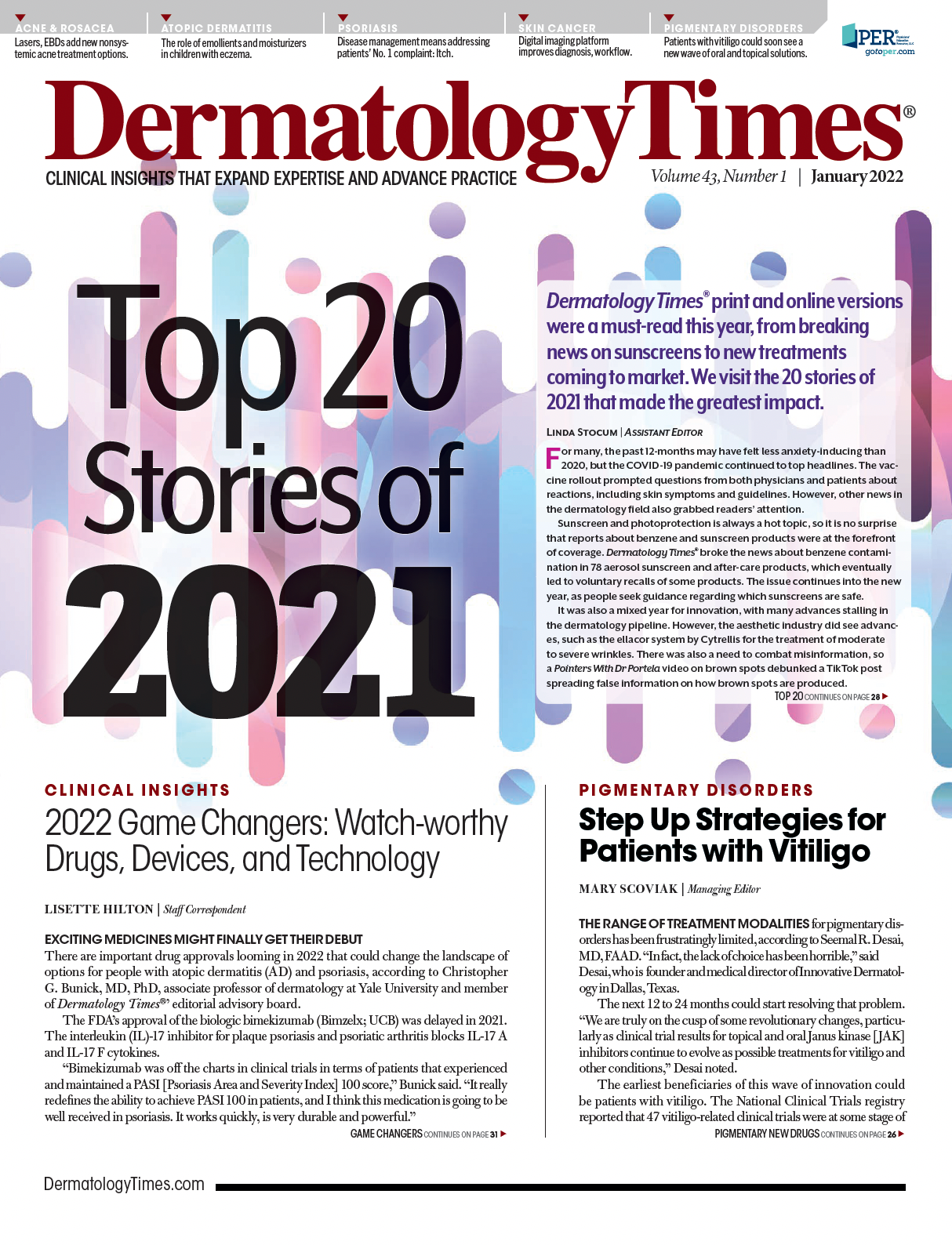- Case-Based Roundtable
- General Dermatology
- Eczema
- Chronic Hand Eczema
- Alopecia
- Aesthetics
- Vitiligo
- COVID-19
- Actinic Keratosis
- Precision Medicine and Biologics
- Rare Disease
- Wound Care
- Rosacea
- Psoriasis
- Psoriatic Arthritis
- Atopic Dermatitis
- Melasma
- NP and PA
- Skin Cancer
- Hidradenitis Suppurativa
- Drug Watch
- Pigmentary Disorders
- Acne
- Pediatric Dermatology
- Practice Management
- Prurigo Nodularis
- Buy-and-Bill
Publication
Article
Dermatology Times
Lasers Shine New Light on Acne Therapy
Author(s):
With the complication rate of treatment declining and new devices now available, laser- and energy-based light treatment for acne and scarring continues to evolve.
What advantages do lasers or energy-based devices (EBDs) have over topical, oral, and other acne treatments? David J. Goldberg, MD, JD, director of Skin Laser and Surgery Specialists of New York and New Jersey; past director of Mohs and Laser Research at Icahn School of Medicine at Mount Sinai in New York, New York; adjunct professor of law at Fordham University School of Law in New York City; and a member of the Dermatology Times® editorial advisory board, tackled this question during his presentation at the 11th annual New Frontiers in Cosmetic Medicine and Medical Dermatology symposium.1
Like prescription medications, lasers and EBDs have proved effective in treating acne, Goldberg said. However, these options may better suit the challenges of certain cases or individual patient preferences. An important factor for some patients and physicians, he noted, is that this technology reduces some problems with adherence—patients do not have to self-manage treatment on a daily or twice-daily basis. Because the physician performs the procedure, it is easier to track adherence and ensure optimal, standardized treatment delivery, he added.
Lasers and EBDs also provide alternatives for patients who may be concerned about adverse reactions related to systemic medications. The devices expand the menu of nonsystemic treatments for patients with acne who do not want to ingest oral medications or apply topical treatments, even those with lower absorption rates.
With lasers and EBDs, as with prescription medications, no individual tool meets every patient’s needs. The most common types of lasers available are:
- intense pulsed light,
- infrared,
- pulsed dye,
- potassium titanyl phosphate, and
- radiofrequency.
The most used laser now, according to Goldberg, is the 1064-nm infrared laser. This device emits beams that are absorbed by the water in the sebaceous gland, which heats up, reducing sebum output. These lasers are used for hair removal in the millisecond domain, he continued, but affect acne in the microsecond domain. Because they are not absorbed by pigment, they are safe to use in all skin types and are nearly painless, he said.
Goldberg cited data from a 2020 study that enrolled 20 patients, placing 10 in an actively treated group and 10 in a sham group. The investigators aimed to examine the efficacy of the 650-microsecond, 1064-nm Nd:YAG laser. Each group received 3 treatments 2 weeks apart, plus an additional session 4 weeks after the third treatment. Among the 10 patients in the sham group, their condition either did not improve or worsened, whereas patients in the active group showed decreases in inflammatory and comedonal lesions, porphyrin count, and sebum production.2
Although the 1064 infrared laser is effective, he said, a new 1726-nm wavelength that is being evaluated shows promise. This is the first laser to target the sebaceous glands, according to Goldberg, who noted that data will be published soon. Photodynamic therapy expands the choices for some patients but can pose difficulties with adherence, pain level, and phototoxicity, he said.
“Laser and energy-based device acne treatments are areas that have improved and changed over the course of last 2 decades,” Goldberg said. “We’re just beginning to enter a new era of exciting technology for these therapies.”
Disclosures:
Goldberg has received research grants from Aerolase; Cutera, Inc; and Sebacia, Inc.
References
1. Goldberg DJ. Laser treatment of acne: state of the art. new frontiers in cosmetic medicine & medical dermatology. Presented at: New Frontiers in Cosmetic Medicine and Medical Dermatology Symposium; November 12-14, 2021; Hasbrouck Heights, New Jersey, and virtual.
2. Kesty K, Goldberg DJ. 650 usec 1064nm Nd:YAG laser treatment of acne: a double-blind randomized control study. J Cosmet Dermatol. 2020;19(9):2295-2300. doi:10.1111/jocd.13480






